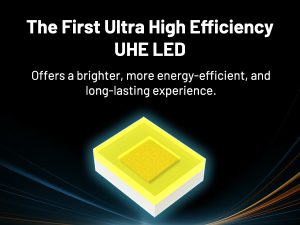Key Takeaways:
- The Davy Lamp and Carbide Lamp helped pave the way for headlamps
- The evolution of headlamp technology was driven by the need for safer and more efficient illumination in various industries and activities.
- With modern-day innovations, headlamps are brighter, lighter, and last longer than their older counterparts.
In the modern world, headlamps have become an indispensable tool for various activities, from outdoor adventures to professional work. These portable light sources have a rich history that spans centuries, from the dim glow of early oil lamps to the sophisticated LED systems of today, wearable headlamps have a rich history worth exploring.
Early Illumination
The concept of wearable headlamps can be traced back to ancient civilizations where individuals relied on handheld torches and primitive lamps to light their paths. Early lamps, made of clay, stone, or metal, were filled with animal fats, oils, or plant-based materials, providing a crude form of illumination. The Greeks, for example, used ceramic lamps with a wick soaked in oil to create their own form of portable lighting. The invention of candles helped people light their way, but most early-day candles could be burned up within only an hour. These early light sources, while effective to some extent, lacked the convenience and hands-free functionality that headlamps later provided. As civilizations advanced, so did the technology behind portable lighting.
The Mining Industry’s Effects On Headlamps
The Davy Lamp
Before they adopted headlamps, miners relied on handheld lamps or candles for illumination in dark and hazardous conditions. However, these traditional lighting sources posed safety hazards, particularly in environments prone to explosive gas like methane. One of the most notable innovations was the invention of the Davy lamp by Sir Humphry Davy in 1815. The Davy lamp featured a flame that would be enclosed instead of exposed. Miners could carry the Davy lamp with them, often using a hook or clip attached to their clothing or helmet to keep it secure. While not worn directly on the head, the hands-free design allowed miners to have mobility and work more efficiently in dark and hazardous underground environments. This design laid the foundation for practical headlamp implementation in mining.
Carbide Lamps
Throughout the 19th and early 20th centuries, various designs of wearable headlamps were developed and used in mining, although they may not have been as sophisticated or ergonomic as modern headlamp designs. These early wearable headlamps were either oil lamps or carbide lamps. Carbide lamps could attach to a miner's helmet or hat, providing hands-free illumination for underground work. Carbide lamps were considered safer than open-flame lamps or candles because the flame was contained within the lamp. Carbide lamps worked where at the top of the lamp was a water reservoir where the miner would fill water. Below the reservoir was a chamber filled with calcium carbide, a solid chemical compound. When water dripped onto the calcium carbide, a chemical reaction occurred, producing acetylene gas and calcium hydroxide, a harmless byproduct. Once the acetylene gas was produced, it was directed to a burner where it mixed with air and ignited, producing a bright flame. The intensity of the flame could be adjusted by controlling the flow of water onto the calcium carbide. The flame provided illumination in the mine, allowing miners to work safely in dark conditions. However, miners still needed to handle calcium carbide with caution as it could react violently when exposed to water. The new hands-free operation offered a distinct advantage over handheld lamps or candles. Miners could wear these headlamps on their helmets, freeing their hands to perform tasks like drilling, shoveling, or handling equipment. This increased mobility and productivity in underground mines, as miners no longer had to juggle a lamp while working. As awareness of safety issues in mining grew, regulatory bodies began to mandate the use of safer lighting solutions in mines and other industries.
The Electrification of Headlamps
The introduction of electric headlamps represented a significant leap forward in lighting technology. Electric headlamps utilized incandescent bulbs powered by batteries, offering a brighter, more consistent light source without the need for chemical reactions or open flames. This made electric headlamps safer, more reliable, and easier to maintain compared to carbide lamps. One of the key drivers of the transition from carbide headlamps to electric headlamps was the growing emphasis on safety in industrial workplaces. Carbide lamps, while effective, posed inherent safety risks due to the use of flammable gas and chemical reactions. Electric headlamps eliminated these risks by providing a safer alternative that did not rely on volatile substances for illumination.
Additionally, advancements in battery technology played a crucial role in the transition to electric headlamps. Improved battery designs made it possible to power electric headlamps for extended periods, providing workers with reliable illumination throughout their shifts. This enhanced battery technology also contributed to the development of lighter and more ergonomic headlamp designs, further driving the adoption of electric headlamps.
Regulatory changes and industry standards also played a significant role in the transition to electric headlamps. As safety regulations became more stringent, some regulatory bodies mandated the use of electric lighting systems as part of broader efforts to improve workplace safety. This regulatory pressure accelerated the adoption of electric headlamps in industrial settings, further hastening the decline of non-electric headlamps.
Modern Innovations
In recent decades, headlamp technology has undergone remarkable innovations, transforming these once simple devices into sophisticated tools equipped with advanced features to meet the diverse needs of users across various industries and activities.
LED Lights
One of the most notable innovations in modern headlamp technology is the transition from traditional incandescent bulbs to light-emitting diodes (LEDs). LEDs offer several advantages over incandescent bulbs, including higher energy efficiency, longer lifespan, and superior brightness. This shift has resulted in headlamps that provide brighter and more reliable illumination while consuming less power, making them ideal for extended use in outdoor adventures, professional work settings, and emergencies.


Rechargebility
Another significant advancement in modern headlamp design is the integration of rechargeable battery systems. Rechargeable headlamps eliminate the need for disposable batteries, reducing waste and environmental impact while offering the convenience of easy recharging via USB-C ports or wall outlets. This feature ensures that users always have access to a reliable power source for their headlamps, whether they are on the trail, at the job site, or in the backcountry.
Multiple Modes
Furthermore, modern headlamps often come equipped with advanced features and functionalities to enhance versatility and user comfort. Many models feature adjustable brightness levels, allowing users to customize the intensity of light according to their specific needs and preferences. Some headlamps also offer multiple lighting modes, including spotlights, floodlights, and red light modes, catering to various outdoor activities such as hiking, camping, and night running, as well as professional tasks like reading maps, conducting inspections, and performing rescue operations.


Comfortability
In addition to advanced lighting capabilities, modern headlamps incorporate ergonomic designs and lightweight materials to maximize comfort and usability during extended wear. Adjustable headbands and strap systems ensure a secure and comfortable fit for users of all head sizes, while lightweight construction minimizes fatigue and strain, making modern headlamps suitable for prolonged use in demanding environments.
Overall, the modern innovations in headlamp technology have transformed these essential tools into versatile and high-performance devices capable of meeting the diverse needs of users across a wide range of industries and activities. From outdoor adventures and professional work settings to emergency preparedness and everyday use, modern headlamps continue to evolve to provide reliable illumination, convenience, and comfort in any situation. As technology continues to evolve, the future of wearable headlamps looks promising. Researchers are exploring innovative materials and design concepts to further improve the performance, comfort, and functionality of headlamp systems. From enhanced battery technologies to advanced optics and ergonomic designs, the next generation of wearable headlamps is poised to revolutionize portable lighting once again.
Recap
From the humble oil lamps of ancient civilizations to the sophisticated LED headlamps of today, the history of wearable headlamps is a testament to human innovation and ingenuity. Over the centuries, these portable light sources have evolved from simple handheld devices to advanced hands-free systems that provide users with unparalleled convenience and functionality. As we look to the future, one thing is certain - wearable headlamps will continue to illuminate our paths and accompany us on our adventures for generations to come.
If you’re looking to get your headlamp, you can look through Nitecore’s selection here. Or if you’re looking for more history blogs, you can check out our History of Flashlights post.

